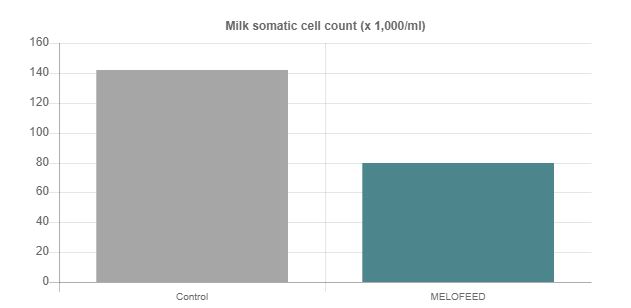Blog | Reading Time 3 minutes
Postpartum cows are sensitive to heat stress: antioxidant nutrition can help
Recent research investigates the link between heat stress, immune response, and inflammatory and antioxidant status of cows. It appears that, for transition cows, heat stress can be even more challenging, but antioxidant solutions can help.
A trigger for postpartum dairy cows
Elevated temperatures trigger cortisol secretion, which is also known as the stress hormone. Scientists have shown that heat stress can affect the cow’s innate immunity, disrupt inflammatory patterns and affect her antioxidant capacity.1 Research has shown that increases in the temperature and humidity index (THI) increases the incidence of uterine diseases and retained placentas.2 Uterine diseases already affect up to 40% of postpartum cows. Other studies show that milk somatic cell counts (SCC) increase as the THI increases, as well as the number of milk samples with bacterial contamination.
This can mean the host’s resistance to, or ability to fight against, pathogens is reduced when the cow reaches its maximum temperature comfort zone, which can start at 18°C — depending on humidity — and corresponds to a THI of around 68.
Dairy cows exposed to THI 68 and greater are also more likely to have increased inflammatory responses in the postpartum period compared to cows not submitted to heat stress.3,4
Reduced milk yield is also associated with heat stress, whether the hot period occurs before parturition, after parturition or both.
Thus, measures to alleviate the consequences of heat stress should be considered during the entire transition period, from dry-off through the first months into lactation.
Maintaining the antioxidative balance
Maintaining a balanced antioxidant status is one way to support an enhance immune system and alleviate the negative postpartum consequences of heat stress such as increased inflammation and decreases in milk production.
Feeding a specific antioxidant with a high level of bioavailability, such as selenium enriched yeast (ALKOSEL), and a supplement rich in superoxide dismutase (SOD) (MELOFEED) (Fig. 1-2) under a high heat stress environment, was shown to:
- Improve antioxidant capacity around parturition5
- Lower somatic cell counts6
Selenium supplementation is also linked to reduction of placenta retention.
Figure 1: Effect of MELOFEED supplementation on total antioxidant status of cows around calving (Lallemand Animal Nutrition internal data. 2020. Commercial farm, Germany 2020)

Figure 2: Effect of MELOFEED supplementation on milk somatic cell counts during heat stress period (Lallemand Animal Nutrition internal data. 2020. Commercial farm, Germany 2020)
To find out more about Lallemand Animal Nutrition’s complete program for heat stress management, visit Lallemand Heat Stress program.
REFERENCES
Published Apr 11, 2023 | Updated Jun 6, 2023